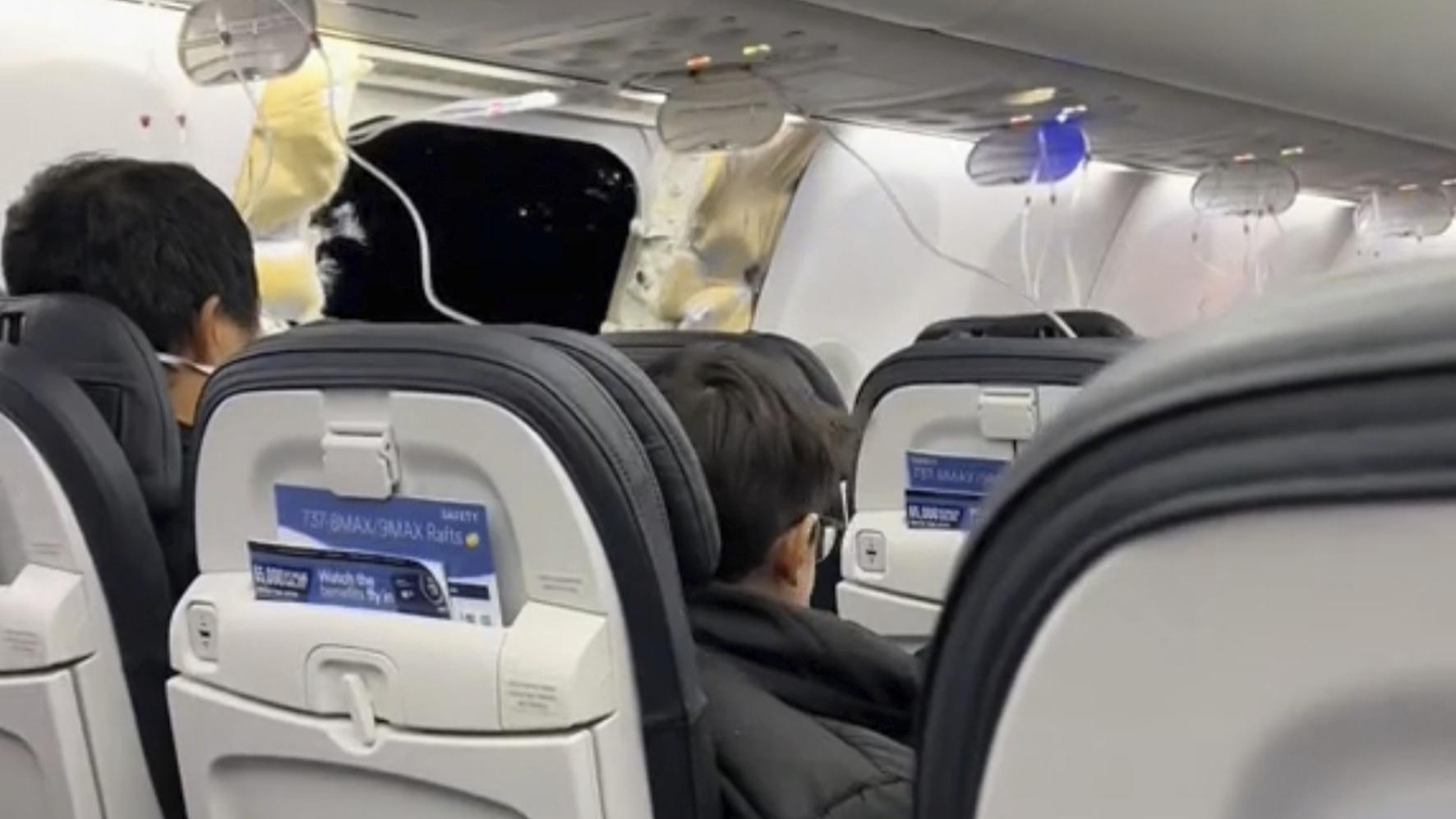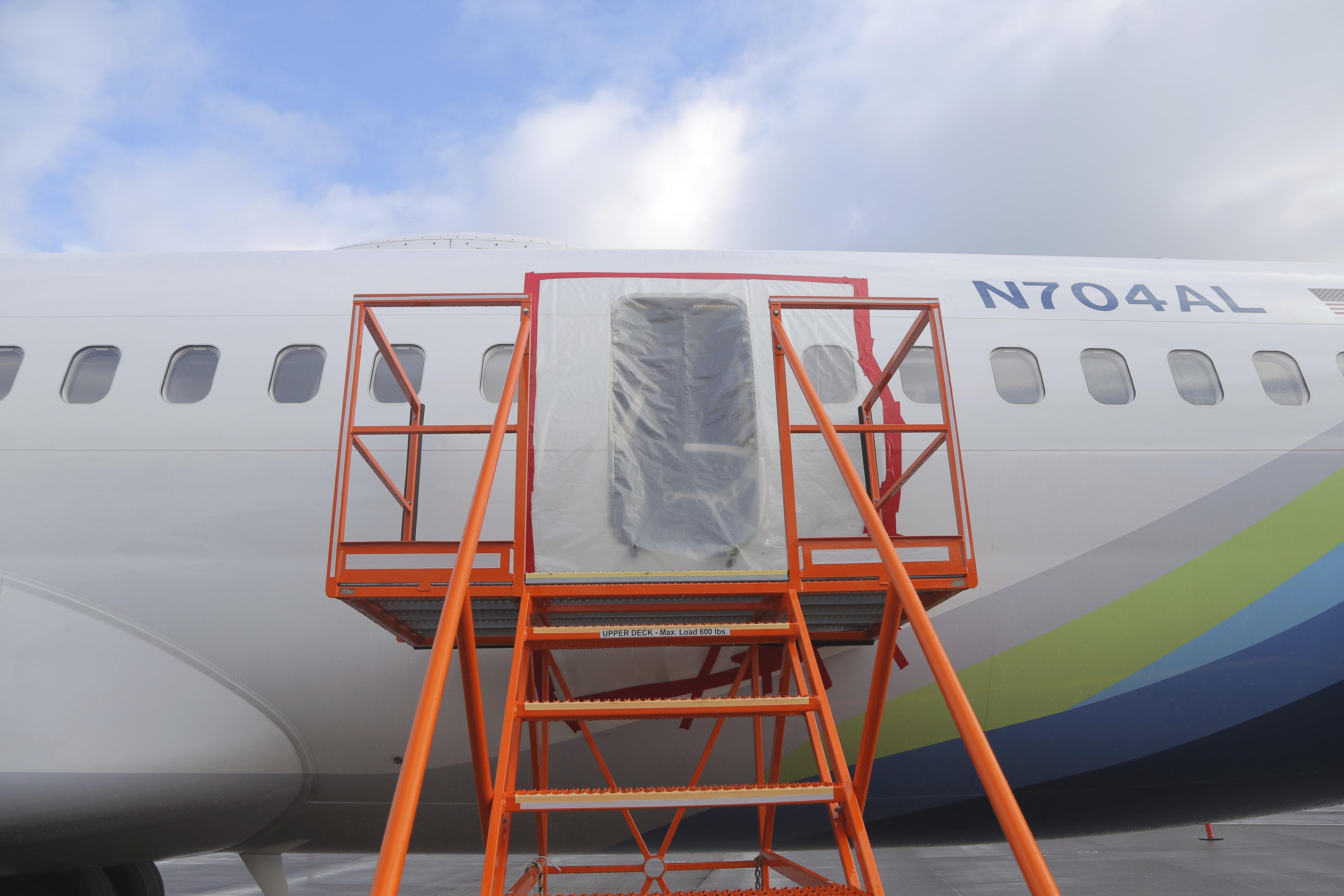 The Boeing Co logo is displayed outside of company offices near Los Angeles International Airport (LAX) in El Segundo, California on Jan 18, 2024. (PHOTO / AFP)
The Boeing Co logo is displayed outside of company offices near Los Angeles International Airport (LAX) in El Segundo, California on Jan 18, 2024. (PHOTO / AFP)
WASHINGTON/DUBLIN - Boeing said on Monday it was withdrawing a request for a key safety exemption that could have allowed US regulators to speed up certification of its coming 737 MAX 7, in the latest fallout from the planemaker's ongoing crisis.
Lawmakers had been pressuring the planemaker to withdraw the petition following a harrowing mid-air cabin blowout on Jan 5 that has exposed numerous safety and quality control concerns at one of the world's two major jet makers.
The withdrawal, first reported by Reuters, throws the anticipated timeline for certifying Boeing's MAX 7 and the larger, better-selling MAX 10 into further doubt because it may force Boeing to make design changes more quickly than it had planned.
READ MORE: FAA bars Boeing for expanding, ends partial grounding
CEO David Calhoun withdrew the exemption request after being asked to do so in Capitol Hill meetings last week as Boeing grapples with growing safety concerns following the mid-air incident on a 737 MAX 9 jet operated by Alaska Airlines.
While we are confident that the proposed time-limited exemption for that system follows established FAA processes to ensure safe operation, we will instead incorporate an engineering solution that will be completed during the certification process.
Boeing, Jet maker
No one died in the blowout that left passengers staring at open space 16,000 feet above the ground and forced the pilots to make an emergency landing. But the incident has turned into a full-blown safety and reputational crisis for Boeing that will slow plane production and risks it ceding further market share to Airbus.
After its best-selling MAX family of jets resumed service following two fatal crashes, Boeing had at one point forecast it would win approval for the MAX 7 and 10 by the end of 2022. The head of the Federal Aviation Administration (FAA) has repeatedly declined to put any timetable on approval.
The ongoing delays have set back the fleet plans of major carriers including Southwest Airlines and United Airlines, the biggest customers for the MAX 7 and MAX 10 respectively.
READ MORE: Boeing 757 loses nose wheel while preparing for takeoff
Boeing's decision to withdraw the exemption request came ahead of its fourth-quarter results on Wednesday.
The exemption would have allowed the MAX 7 to be certified before making design changes to the nacelle inlet structure and engine anti-ice system to prevent overheating that could lead to severe damage or a failure of the engine inlet inner barrel.
The MAX 10 will also require design changes if an exemption is not sought. A nacelle is the structure that holds an aircraft engine.
Boeing originally proposed the MAX 7 exemption run through May 2026 - the time period the company believed necessary to develop and certify design changes, but approval of the request was thrown into doubt after the Alaska Airlines accident.
 This image from video provided by Elizabeth Le shows passengers near the damage on an Alaska Airlines Boeing 737 Max 9, Flight 1282, which was forced to return to Portland International Airport on Jan 5, 2024. (PHOTO / ELIZABETH LE VIA AP)
This image from video provided by Elizabeth Le shows passengers near the damage on an Alaska Airlines Boeing 737 Max 9, Flight 1282, which was forced to return to Portland International Airport on Jan 5, 2024. (PHOTO / ELIZABETH LE VIA AP)
"While we are confident that the proposed time-limited exemption for that system follows established FAA processes to ensure safe operation, we will instead incorporate an engineering solution that will be completed during the certification process," Boeing said in a statement, without providing an estimate of how long that would take.
The FAA deferred comment to Boeing.
Duckworth, Calhoun confer
US Senator Tammy Duckworth, who leads the Senate Commerce Committee's aviation safety subcommittee, said last week she requested that Boeing withdraw the exemption request during a meeting with CEO Calhoun.
Calhoun called Duckworth about the withdrawal decision, she said in a Monday evening interview with Reuters, adding that he thanked her for pushing the company to do "what is absolutely the right thing to do."
ALSO READ: US authorities: More Boeing 737 planes should get checks
Duckworth called the withdrawal "probably a tough decision for the shareholders and but also the right decision for the people who will be flying as passengers on the aircraft."
Boeing had previously projected 737 production expected to reach 50 jets per month, but that is also in question after the FAA last week announced it would not approve further production rate increases for the 737 MAX
Before the Alaska accident, Boeing was expected to release a new financial and delivery target for 2024 and provide an update on its forecast for 2025-26, the timeframe in which the planemaker's operations were expected to stabilize.
Richard Aboualfia of AeroDynamic Advisory said a delay of MAX 10 certification could push customers into the arms of European rival Airbus, further eroding Boeing's 40 percent share of the narrowbody market.
United Airlines CEO Scott Kirby flew to Toulouse recently to inquire whether it could buy A321neo jets to replace MAX 10 order slots, Reuters reported on Sunday.
Dennis Tajer, a spokesperson for the union representing American Airlines pilots, said Boeing's decision to withdraw the exemption request was good news, but questioned what Boeing and the FAA would do for the MAX 8 and 9 models.
ALSO READ: Atlas Air Boeing cargo plane makes emergency landing
"What are they doing about the planes that are flying now?” he said.
The FAA said last year Boeing was developing a design change to fix the problem on the MAX 8 and 9 and it might require it to put it in place on those planes in the future.
 This photo released by the National Transportation Safety Board shows a gaping hole where the paneled-over door had been at the fuselage plug area of Alaska Airlines Flight 1282 on Jan 7, 2024, in Portland, Oregon. (PHOTO / NATIONAL TRANSPORTATION SAFETY BOARD VIA AP)
This photo released by the National Transportation Safety Board shows a gaping hole where the paneled-over door had been at the fuselage plug area of Alaska Airlines Flight 1282 on Jan 7, 2024, in Portland, Oregon. (PHOTO / NATIONAL TRANSPORTATION SAFETY BOARD VIA AP)
US Senate Commerce Committee Chair Maria Cantwell said Boeing's withdrawal "is good news. I hope this means they can quickly develop a compliant design across other MAX planes."
Boeing had previously projected 737 production expected to reach 50 jets per month, but that is also in question after the FAA last week announced it would not approve further production rate increases for the 737 MAX.
Management in focus
Multiple sources told Reuters that industry speculation was swirling about various permutations of leadership changes at Boeing or its commercial division ahead of a US National Transportation Safety Board (NTSB) report due in coming days and what could be a tricky hearing before Congress.
READ MORE: Indonesia allows Boeing MAX 9 planes to fly again after checks
Executives at an Airline Economics conference in Dublin on Monday publicly backed Boeing's management. "They're under no illusions about the severity of the situation," AerCap CEO Aengus Kelly told Reuters on the sidelines of an Airline Economics conference in Dublin on Monday.
The door plug that blew out is present on most 737 MAX 9 planes, in place of an exit airlines could have added if they wanted a greater number of seats.
Trade publication The Air Current last week reported that the door plug on the affected MAX 9 reached Boeing's factory from Spirit AeroSystems with bolts installed, but that the planemaker re-opened it to give access to nearby rivets that had been mis-installed by Spirit.
ALSO READ: Alaska, United cut more flights as Boeing probes 'quality' issue
Spirit and Boeing referred queries on the probe to the NTSB. The agency's chair Jennifer Homendy said on Jan 18 that it was too early to say if the root cause of the blowout was missing or mis-installed bolts.



